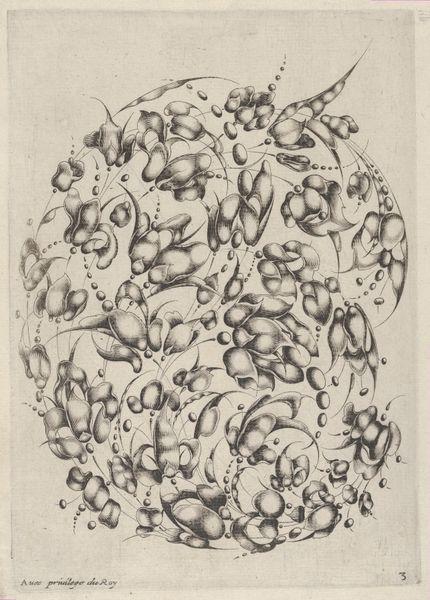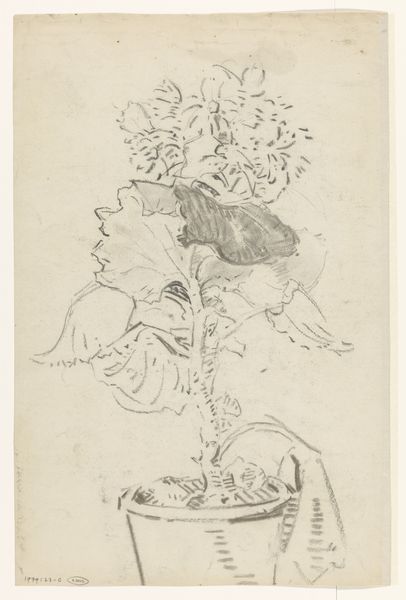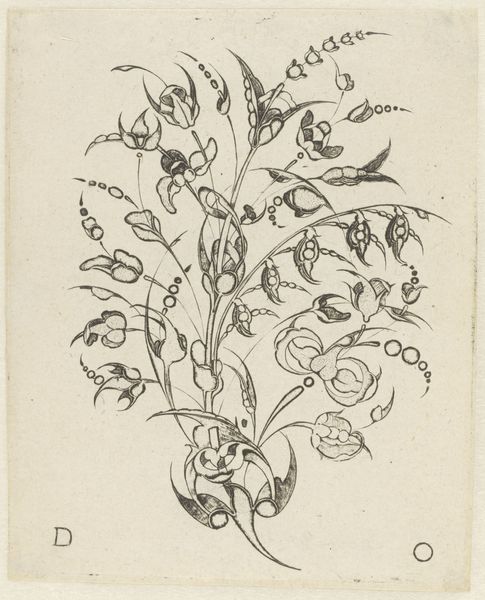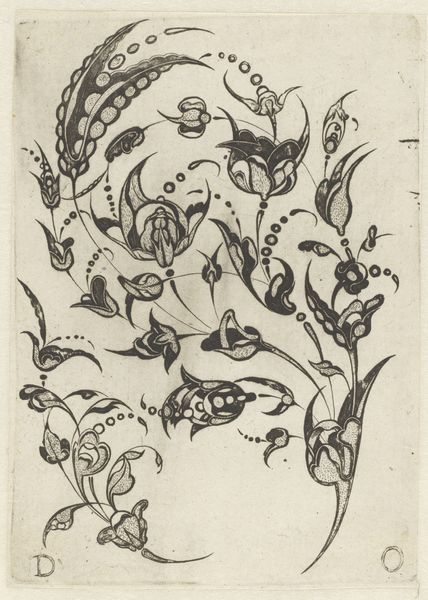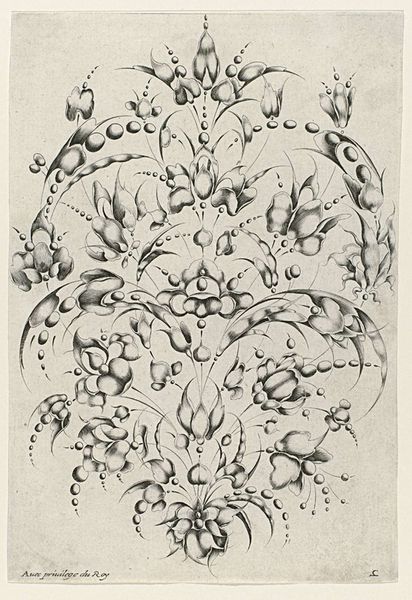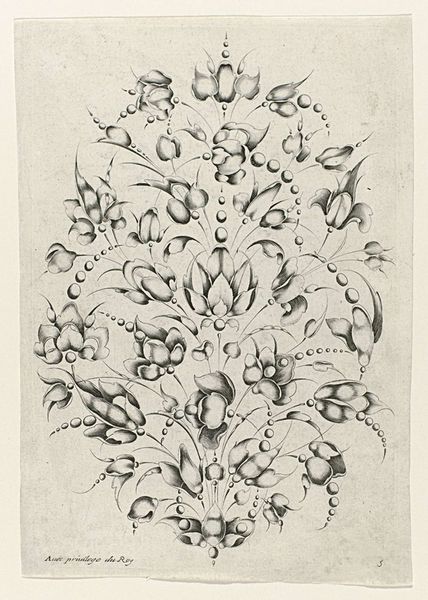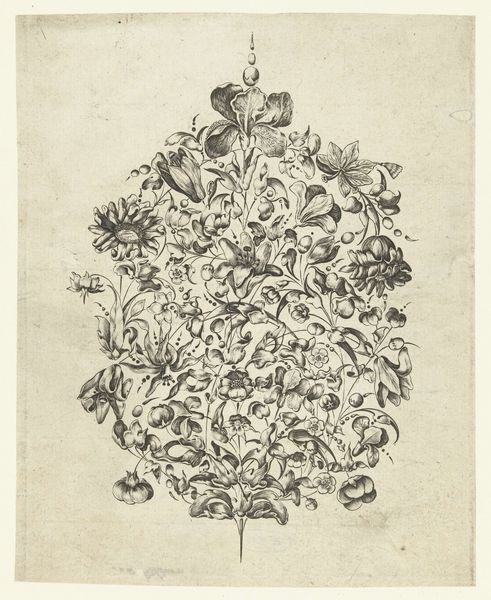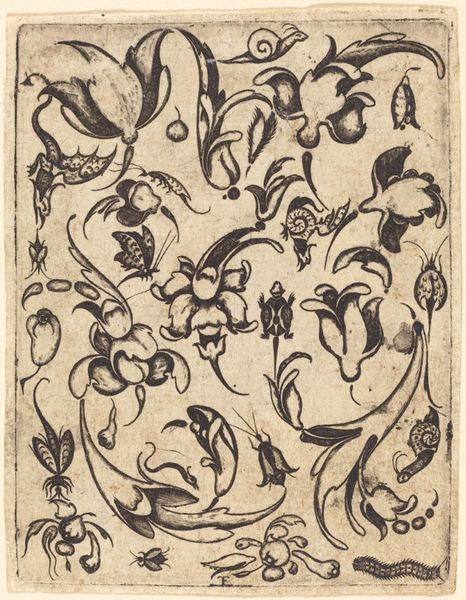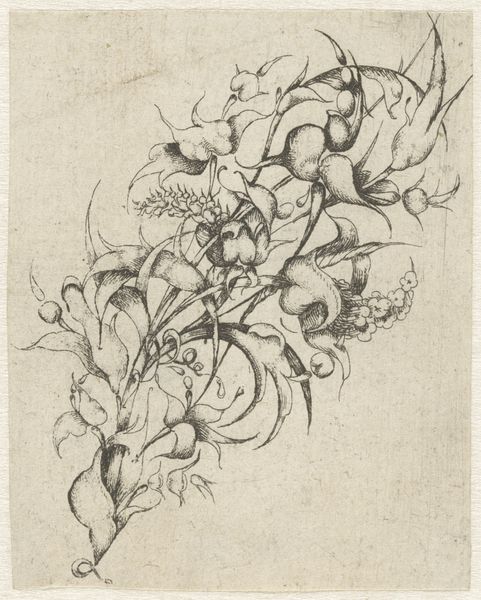
drawing, print, engraving
#
drawing
#
baroque
# print
#
geometric
#
line
#
engraving
Dimensions: height 142 mm, width 133 mm
Copyright: Rijks Museum: Open Domain
Editor: Here we have Francois Lefebure’s "Edelsmidboeket met ranken," an engraving from 1635, held at the Rijksmuseum. The intricacy of the botanical arrangement is simply astonishing, it's like a whirlwind of leaves and flowers! How would you interpret this ornamental print, in its historical context? Curator: Well, beyond its aesthetic appeal, consider the social function of such prints in 17th-century Europe. This isn't just decoration; it's a powerful statement about class and the emerging role of artisans. Floral designs, at that time, symbolized luxury, nature's bounty appropriated for domestic display. What does it mean for that imagery to be widely available in a print? Editor: That’s interesting. I see how prints democratized access to luxurious imagery, yet the dense circular form still suggests an exclusive aesthetic, somehow removed from natural representation. Do you think this tension might have played a role in art production? Curator: Precisely! The circulation of such designs was part of a larger power dynamic. Wealthy patrons used precious metals fashioned after prints like this one to further display social prestige. It raises questions about artistic creation, consumption, and even the beginning of artistic copyright, the artisan's right to ownership. Think about how Lefebure is actively participating in commerce with this reproductive artwork. Editor: I never thought of it in terms of copyright and ownership, and how prints function both as luxury item and decorative design. It really gives me a lot to consider. Thanks! Curator: My pleasure. Let's consider this image not as an isolated piece but as a critical reflection of 17th-century capitalist aspirations. Art never exists in a vacuum.
Comments
No comments
Be the first to comment and join the conversation on the ultimate creative platform.
